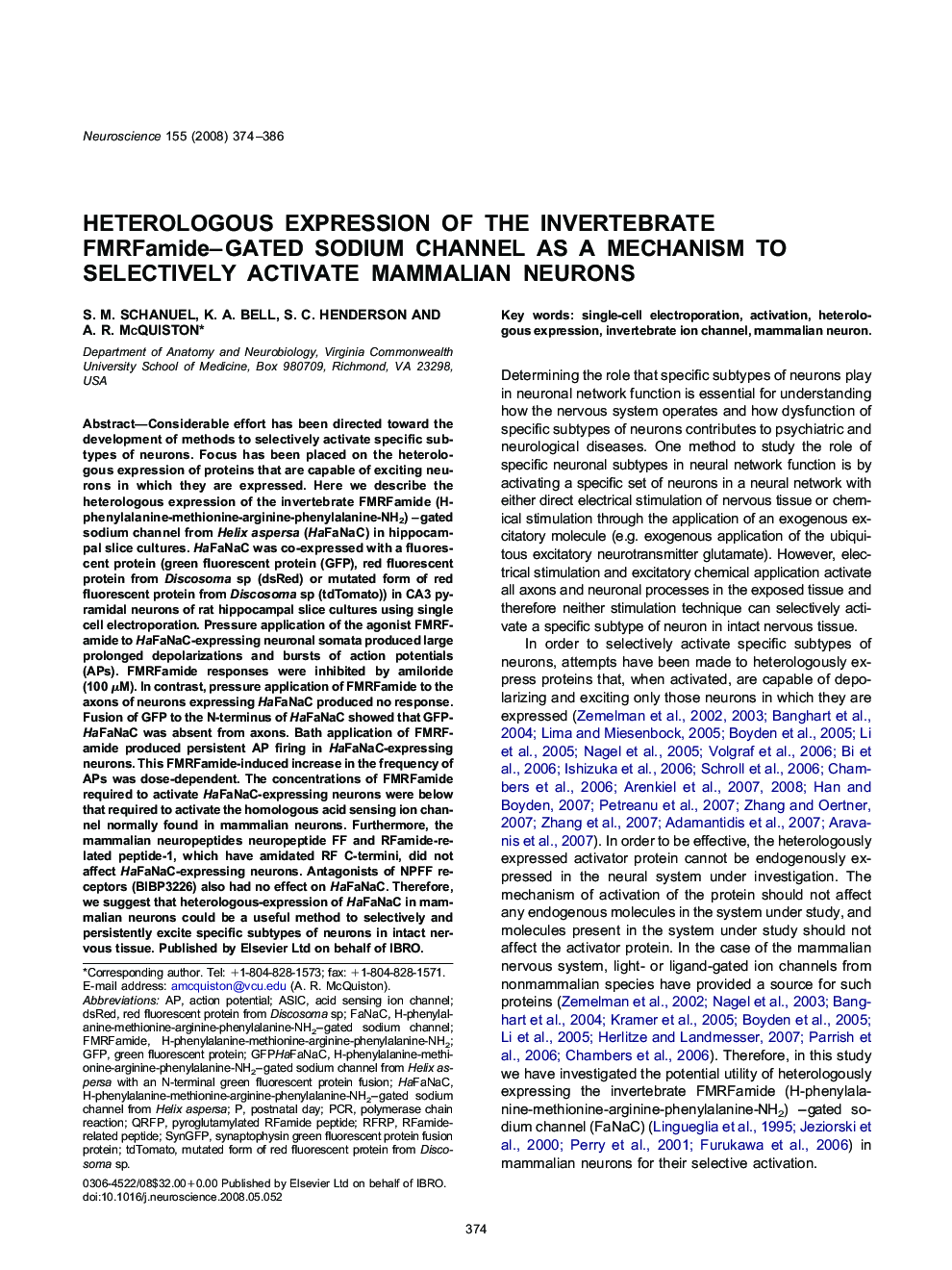| کد مقاله | کد نشریه | سال انتشار | مقاله انگلیسی | نسخه تمام متن |
|---|---|---|---|---|
| 6278142 | 1295796 | 2008 | 13 صفحه PDF | دانلود رایگان |
عنوان انگلیسی مقاله ISI
Heterologous expression of the invertebrate FMRFamide-gated sodium channel as a mechanism to selectively activate mammalian neurons
دانلود مقاله + سفارش ترجمه
دانلود مقاله ISI انگلیسی
رایگان برای ایرانیان
کلمات کلیدی
موضوعات مرتبط
علوم زیستی و بیوفناوری
علم عصب شناسی
علوم اعصاب (عمومی)
پیش نمایش صفحه اول مقاله

چکیده انگلیسی
Considerable effort has been directed toward the development of methods to selectively activate specific subtypes of neurons. Focus has been placed on the heterologous expression of proteins that are capable of exciting neurons in which they are expressed. Here we describe the heterologous expression of the invertebrate FMRFamide (H-phenylalanine-methionine-arginine-phenylalanine-NH2) -gated sodium channel from Helix aspersa (HaFaNaC) in hippocampal slice cultures. HaFaNaC was co-expressed with a fluorescent protein (green fluorescent protein (GFP), red fluorescent protein from Discosoma sp (dsRed) or mutated form of red fluorescent protein from Discosoma sp (tdTomato)) in CA3 pyramidal neurons of rat hippocampal slice cultures using single cell electroporation. Pressure application of the agonist FMRFamide to HaFaNaC-expressing neuronal somata produced large prolonged depolarizations and bursts of action potentials (APs). FMRFamide responses were inhibited by amiloride (100 μM). In contrast, pressure application of FMRFamide to the axons of neurons expressing HaFaNaC produced no response. Fusion of GFP to the N-terminus of HaFaNaC showed that GFP-HaFaNaC was absent from axons. Bath application of FMRFamide produced persistent AP firing in HaFaNaC-expressing neurons. This FMRFamide-induced increase in the frequency of APs was dose-dependent. The concentrations of FMRFamide required to activate HaFaNaC-expressing neurons were below that required to activate the homologous acid sensing ion channel normally found in mammalian neurons. Furthermore, the mammalian neuropeptides neuropeptide FF and RFamide-related peptide-1, which have amidated RF C-termini, did not affect HaFaNaC-expressing neurons. Antagonists of NPFF receptors (BIBP3226) also had no effect on HaFaNaC. Therefore, we suggest that heterologous-expression of HaFaNaC in mammalian neurons could be a useful method to selectively and persistently excite specific subtypes of neurons in intact nervous tissue.
ناشر
Database: Elsevier - ScienceDirect (ساینس دایرکت)
Journal: Neuroscience - Volume 155, Issue 2, 13 August 2008, Pages 374-386
Journal: Neuroscience - Volume 155, Issue 2, 13 August 2008, Pages 374-386
نویسندگان
S.M. Schanuel, K.A. Bell, S.C. Henderson, A.R. McQuiston,